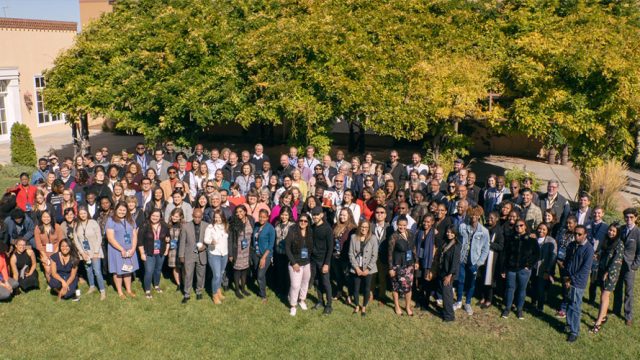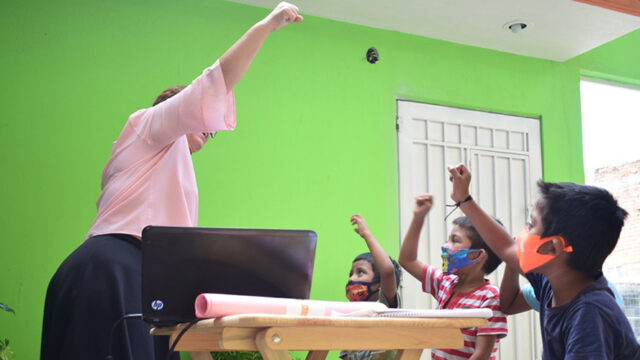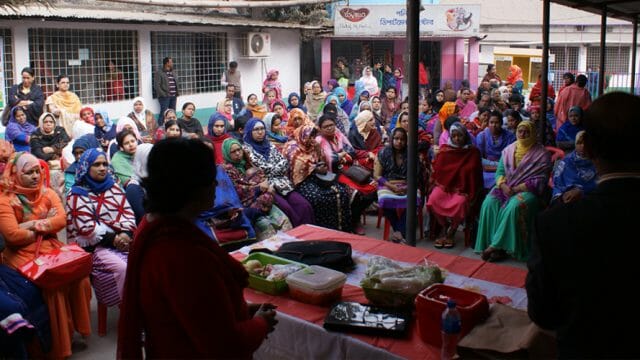Rising to the challenge of being who you are

Being a Black woman in the United States is a challenge and a complex set of burdens. Though we have always played a significant role in the development of the United States, we have often been ignored, insulted and invisible, shamed, stereotyped, and sidelined in spite of our achievements.
Persistent Challenges
We have learned to find humor in heartache, to see beauty in the midst of desperation and horror, to be caregivers and breadwinners, and to show strength and resilience, loyalty, love, and affection. Rising above centuries of oppression, long enduring society’s racist and sexist misconceptions and mistreatment, Black women today, while still caring for their families, are also prominent in major media organizations and other corporations, the military, and state and federal governments. Yet as a society and as a nation, it is still not clear how welcome and understood its Black women are in the United States.
Much is still unknown about the psychology of these 19 million people, seven percent of the U.S. population. Their experience in the workplace, the complexities of their romantic lives, the challenges they face as mothers and grandmothers, their spiritual and religious practices—these and so many other aspects of their lives remain largely unknown to the wider community. The result is continuing and significant discomfort on their part in relation to American society.
In a June 2002 Gallup poll, 61 percent of Black women said they were dissatisfied with “how Blacks are treated in society.” For Black men, the rate of dissatisfaction was lower—47 percent. In the same poll, 48 percent of Black women, in contrast to 26 percent of White women, said they were dissatisfied with “how women are treated in society.”
Astonishing myths about Black women in America survive. For too many minds, Black success stories may be dismissed as outliers rather than typical of their Black woman neighbors and fellow citizens. Many hold, instead, to the elements of the insistent stereotype: if a Black woman is strong, she is not supposed to also be beautiful or feminine; if she works at menial tasks to feed and educate her children, she must not be intelligent; if her family unit is collapsing and her children failing, she is somehow to be seen as tough and unafraid; if she maintains her poise while being accosted with sexual harassment, she is probably oversexed or promiscuous; if she travels the globe, she is probably ferrying drugs. She may be as moral and intelligent as ever, but the signals she receives from the wider society too often tell her that she is not; nor can she be.
Distorted lenses are not unique to any ethnic group, but Black women are routinely defined by a specific set of reductive, inaccurate, and unfair caricatures. These survivals of old Hollywood movies and black-and-white television reruns have mutated into contemporary versions of their old selves.
The emasculating Sapphire, for instance, resides in some episode you chance to stumble upon from NYPD Blue or Law and Order when police make their way into a poor Black neighborhood: Sapphire is harsh, loud, uncouth, usually making other characters seem more professional, more charming, more polished by contrast. Sapphire is a twisted take on conscientious striving, the Black women who assume multiple roles and myriad tasks upon the absence of their men lost to murder or prison, fulfilling the stereotype of strong and determined while ignoring the physical and emotional strain and the desperate need for balance in their lives. Their effort becomes a health struggle: soaring blood pressure; the consolation of food—and the wrong foods at that; depression; fantasizing about escaping; the untruth that they can and must persevere and endure against great odds without being negatively affected.1
Such stubborn societal myths, stereotypes based on race, gender, and social class, are a continuing assault against Black women, invading their inner psyche, becoming permanently internalized, battering them from within even if they’re able, for a time, to wriggle free and live the truth. The effort to cope with or qualify based on an external and unbalanced agenda makes it harder to trust oneself or to trust others who look or behave as you do. Confusing parameters on who you think you are, and what you believe you should or can become, often dictate what you expect, what seems real, and what seems possible.2
Persistent Prejudices
The challenges Black women face are sourced in both gender discrimination and ethnic prejudice. With regard to the latter, Black women live with fears similar to those of Black men in the area of law and order. They are concerned that they not appear too aggressive to the police; anxious that they not be dismissed again and again as welfare queens, sponging on the nation’s economy; anguished that when shopping they can so often be profiled as potential shoplifters; dismayed that fellow workers wonder what right they have to be in offices of status and social consequence.
They are profoundly frustrated that such academic, professional, or business success as they may achieve makes them appear more threatening than ever to White colleagues and simultaneously more uppity than appropriate among Black friends. Specific health problems ensue from or simply correlate with their life effort. Black women in the United States are three times more likely than White women to die during pregnancy and/or childbirth, and are disproportionately single mothers (67 percent, as opposed to 42 percent among Latinas and 25 percent among White women).
But they can still find a promise of future triumph. It is found in the biographies of their ancestral sisters who lived out in their own time all that their descendants of today most desire and dream of in their own hearts. Today’s Black woman has already seen her Black sisters emerge as champions on America’s sports teams, breaking Olympic records, sustaining the nation’s banner of victory. She has seen them assume prominent places in the past and in the culture of our times both at home and abroad, contributing in such areas as literature, journalism, music, dance, theater, and science. Those pioneers have etched their courage and vision into the cultural landscape.
A sampling of their honor roll of talented, beautiful, deeply thoughtful, and intelligent African American women who have contributed significantly to making America better, would surely include such gems of American humaneness and womanhood as Maya Angelou, Hollywood’s first Black woman director and recipient of the Presidential Medal of Freedom—the highest civilian award in the United States; Johnnetta Betsch Cole, anthropologist, museum director, and first Black female president of Spelman College; Mae Carol Jemison, engineer, physician, and NASA astronaut; Toni Morrison, Pulitzer Prize winner, Nobel Prize in Literature; Carol Moseley Braun, diplomat, politician, and lawyer; Faith Ringgold, painter, writer, mixed media sculptor, and performance artist; Anna Deavere Smith, recipient of the Dorothy and Lillian Gish Prize ($300,000) and founding director of the Institute on the Arts and Civic Dialogue at New York University; and Alfre Woodard, identified as one of America’s most accomplished and versatile actresses.
Two biographies in the accompanying sidebar lay out in greater detail what African American women have been doing for their children, their people, and their nation, indicating what they can be depended on to do tomorrow, regardless of the circumstances.
Role Models
Buoyed by the history of their heroines of the past, Black women are impacting North America today in unprecedented ways. Tennis stars Venus and Serena Williams have been able to draw inspiration from the prowess of Althea Gibson, the first Black woman to win a Grand Slam event in tennis (1956). The Williams sisters have taken a page from her book and written multiple volumes based on it. They are arguably as accomplished as any American sibling pair ever, holding between them 121 singles titles, including 30 Grand Slam titles, 14 Grand Slam doubles titles, four Olympic gold medals each, and on and on.
Then there’s Oprah Winfrey, talk show host and media executive, actress, television producer, magazine founder, and philanthropist. And former first lady Michelle Obama.
The burdens of race and gender do not vanish until those biased are willing to acknowledge their prejudiced perspective, then choose to grow and change for the better. The future of the African American woman is as bright as today’s Oprahs, Michelles, and Serenas, and as promising as yesterday’s Elizabeth Evelyns, Ruth Janettas, and Altheas.
1 For more on Sapphire and other unflattering stereotypes of the Black woman, see Shauna Weides, www.skepticink.com/gps/2015/04/28/mammy-jezebel-sapphire-or-queen-stereotypes-of-the-african-american-female/.
2 For more on the preceding ideas, see Charisse Jones and Kumea Shorter-Gooden, Shifting: The Double Lives of Black Women in America (New York: HarperCollins, 2003), p. 4.
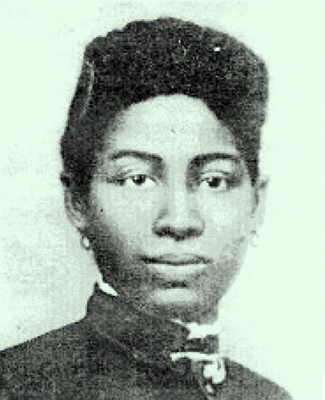
Elizabeth Evelyn Wright
Educator with a mission
A child of former slaves, Elizabeth Wright (1872-1906) learned early the importance of education. Her first schoolroom in Georgia was in the basement of a local church at a time in which getting an education was still a challenge for Black children.
As a teenager, Wright attended Booker T. Washington’s Tuskegee Institute in Alabama as a night student. Because of poor health, she took time off during her senior year to assist teaching Black children at a school in Hampton County, South Carolina. After she recovered her health, she returned to Tuskegee Institute, graduating with the class of 1894.
Returning to South Carolina, Wright tried several times to establish a school for Black children. But her attempts were unsuccessful because of racist-inspired acts of arson and vandalism. She was, however, successful in teaching African American men who came to classes she taught in the evenings.
In 1897, Wright moved to Denmark, South Carolina, and, with the support of Booker T. Washington, secured a 20-acre parcel on which to build a school. While gathering funding and support from community churches and citizens, she started teaching in a room above an abandoned store. She called it the Denmark Industrial School for Colored Youth and patterned it after Tuskegee Institute.
In 1900, after outgrowing the space on which the school was located, Wright found a 280-acre property nearby. Ralph Voorhees, a New Jersey philanthropist, donated $5,000 for the venture, and in 1902, the school opened as the Voorhees Industrial School. It served male and female students on both elementary and high school levels. For several years it was the only high school for Blacks in the area, eventually becoming a fully accredited four-year college.
In 1906, after years of fragile health, Wright sought medical treatment at the well-known Battle Creek Sanitarium. She died on December 14, at the age of 34.
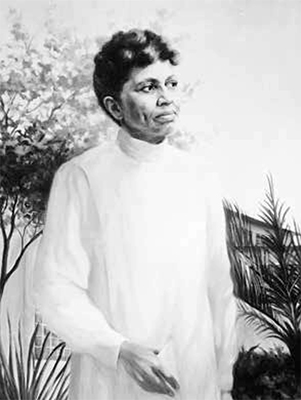
Ruth Janetta Temple
Advocate for affordable health care
Ruth Temple was born in Natchez, Mississippi, in 1892. Her father was a Baptist minister, and her mother was a nurse. Her father, Richard Jason Temple, in addition to emphasizing education, stressed the importance of breaking down barriers based on race, religion, and educational backgrounds.
Temple’s father died when she was 10 years old, and the family moved to Los Angeles. When her mother went to work to provide for her family (Ruth and her five siblings), it fell to Temple to care for her siblings.
She felt led to a career in medicine when her older brother injured himself while experimenting with gunpowder. Another time, a neighbor child fell into a ditch filled with oil and was carried with the current for about a quarter mile. When the boy was rescued, Temple performed CPR on him until he began breathing again.
Juliette Estelle Roy, an Adventist, gave the Temple family Bible studies, and they became founding members of the Furlong Track Seventh-day Adventist Church, the first African American Seventh-day Adventist Church in the West, founded in 1908.
In 1913, Temple enrolled in the College of Medical Evangelists (now Loma Linda University) and was the first African American woman to graduate from that institution with a bachelor’s degree in medicine.
After graduating, Temple worked to provide health services to low-income communities in Los Angeles. Lack of funding forced her to begin small. With the help of her husband, Otis Banks, she turned her five-bedroom home into the Temple Health Institute. It provided free medical care to adults and children, offering immunizations, substance abuse treatment, classes in nutrition, and sex education. She partnered with other community organizations, such as schools, churches, service organizations, and health information centers.
In addition to her community service, she was on the teaching staff of White Memorial Hospital. She retired in 1962 at the age of 70, but continued to provide public health service.
In 1983, the East Los Angeles Health Center was renamed the Dr. Ruth Temple Center. The following year she died at the age of 91.


